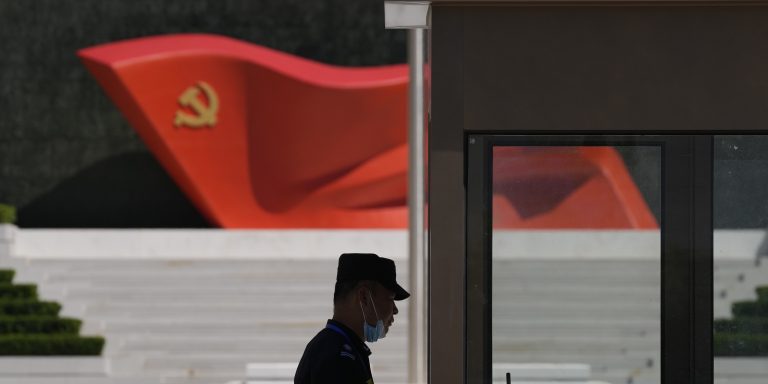INTELBRIEF
June 6, 2023
IntelBrief: Disinformation with Chinese Characteristics

Bottom Line Up Front
- Since 2019, China has become one of the more proficient state actors utilizing malign information manipulation targeting online users, including disinformation campaigns, on social media.
- Thanks to China’s “Great Firewall,” internet users in the PRC cannot access the same set of applications as online users in other countries, like Google, Facebook, and many news and media websites.
- China has sought to obfuscate the origins of COVID-19 and directed influence campaigns against the United States and NATO.
- Advances in artificial intelligence increase the risk to democratic elections across the globe, including Taiwan’s upcoming general election in 2024, and offer more opportunities for actors like the PRC (and other states) to advance their objectives.
The People’s Republic of China (PRC) has historically utilized censorship, propaganda, and disinformationtargeting its own population, and has also utilized similar tactics to target audiences outside of the country’s borders. The PRC’s tactics, capabilities, and goals have evolved in recent years, particularly since 2019; it is now one of the more proficient state actors utilizing malign information manipulation targeting online users, especially on social media. Like many state and non-state actors, Beijing has determined it can make progress on a number of its foreign policy objectives by operating in and through the gray zone, relying on non-kinetic activities like disinformation and cyber-attacks that provide a significant return on investment.
Domestically, censorship, propaganda, and disinformation have long been part of how the Chinese Communist Party (CCP) exerts influence and control over its own population; the CCP censors traditional media and digital media, including social media content. According to Reporters Without Borders, 100 journalists are currently imprisoned in China — the most of any country. Grappling with what is often referred to as “the Great Firewall,” PRC-based internet users cannot access the same applications that online users in other countries can, like Google, Facebook, and many news and media websites. The CCP’s Central Propaganda Department is the most powerful body in the PRC government when it comes to information control and is ultimately responsible for ensuring that information content is in line with CCP doctrine and priorities.
Emerging technologies like facial recognition and artificial intelligence (AI) have allowed the CCP to exert more control over its citizens, both online and offline. Facial recognition, for instance, has been used to surveil the Uighur population in Xinjiang, where the minority Muslim population has been subjected to detention, “re-education programs” and widespread reports of intimidation, torture, and repression of religious belief and expression corroborated by investigations by Western journalists and diplomats. Coupled with policies like the controversial “Social Credit Score” system and expanded counter-espionage legislation to name two, such measures contribute to Xi’s governing goal of “comprehensive national security” to ensure the CCP remains in power. Controlling the information environment and wielding information both inside and outside of China is a key component of that goal.
In recent years, malign information manipulation, including disinformation campaigns, has become a key component of PRC influence operations directed outside its borders. As its tactics, capabilities, and goals have evolved, the PRC has come to be considered one of the more capable state actors in this space. The PRC has seemingly taken a page out of Russia’s playbook, in taking to social media to spread false or misleading narratives about the origins of COVID-19, amplify Kremlin talking points and conspiracy theories about the United States and NATO, and target private sector companies with falsities when they criticize CCP policies — for example the documented human rights abuses and forced labor in Xinjiang. According to the Alliance for Securing Democracy, between January and April 2022, PRC diplomats re-tweeted Russian sources three times more often than between January and April 2022 than during the same time period of the prior year. In 2022, the cybersecurity firm Mandiant reported that the PRC had sought to influence U.S. voters audiences ahead of the midterm election by targeting them with propagandistic content.
The PRC’s increased affinity for utilizing malign information manipulation, such as disinformation, has worrying implications for the international community. The PRC’s alignment with Russia and amplifying Kremlin-backeddisinformation campaigns and conspiracy theories is another facet of the Sino-Russian alignment that poses challenges for Western actors whose influence can be undermined by these. For the private sector, the PRC will likely continue to utilize disinformation as an economic coercion tool to punish and reward alignment with CCP policy – or at least reward those who do not criticize the state. That the U.S. was readily able to identify Chinese attempts to influence the 2022 elections speaks to China’s still-developing capacity and However, advances in AI and their implications for large-scale information manipulation increase the risk that the PRC will continue to attempt to influence democratic elections across the globe in the future. Perhaps the most consequential such target is Taiwan’s upcoming general election in 2024. The PRC has historically utilized disinformation to target online users in Taiwan, including during elections. Next year, the stakes could not be higher. No matter which party takes home the win in Taiwan, the upcoming general election is likely to impact Cross-Strait relations one way or another. In turn, this will chart the course for U.S.-China relations and tensions in the Strait. With tensions about the prospects for conflict in Taiwan already circulating, the elections could affect global security and stability at a time when the international community is already grappling with several security and development challenges – often interconnected – including the war in Ukraine, insecurity and instability across the Sahel, climate crises, and food insecurity.